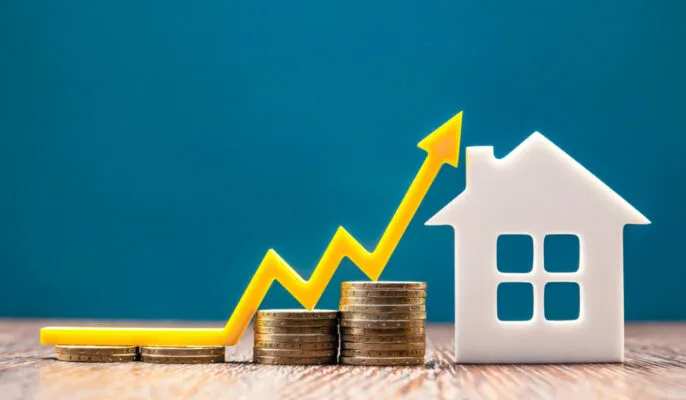
Navigating the Future of Energy and Materials
The energy and materials sectors have always been complex—but today, that complexity is deepening. Geopolitical shifts, evolving regulations, and rapid technological advancements are reshaping the landscape. As the world races to meet growing energy demand more responsibly, both challenges and opportunities are expanding.
According to the International Energy Agency (IEA), global energy demand is projected to rise by nearly 30% by 2030, fueled by population growth and economic development—particularly in emerging markets. In this context, affordable and reliable energy access is more essential than ever. It underpins living standards and enables economic progress. Looking further ahead to 2050, the pressure on energy supply systems will only increase. Any transition that fails to deliver real, affordable energy at scale risks falling short of its goals.
Rethinking Industry Models in a Changing Landscape
Fundamental shifts in how we source and supply energy and materials are disrupting traditional value chains and creating new opportunities for value creation. To stay ahead, companies need to adopt “future-back” strategies—planning not just for the near term but for what’s coming next.
For instance, AI’s growing energy footprint is accelerating demand for digital infrastructure. In 2023 alone, global data center capacity rose by approximately 20%—or about 15 gigawatts—mainly in the U.S. and China. Meeting this demand will require robust, scalable, and secure infrastructure.
Meanwhile, legacy technologies remain vital. Take petrochemicals: despite a downturn following a wave of investment from 2016 to 2020, demand remains strong through 2050. Transitioning these facilities requires a phased approach—gradually incorporating bio-based or recycled feedstocks, piloting carbon capture, utilization and storage (CCUS), and electrifying key processes using low-emission power sources. This measured transition helps companies build both the technological capability and regulatory readiness to remain competitive in a low-carbon world.
In the critical minerals sector, upstream producers are forging direct partnerships with OEMs to co-invest in innovation and secure long-term supply chains. These collaborations are accelerating breakthroughs in extraction, refining, conversion, and recycling—such as sustainably producing lithium from both hard rock and brine sources.
Across the board, business models are shifting—from commodity-focused strategies to specialized, value-driven approaches.
Redefining Sustainability
Sustainability remains foundational, but the conversation must evolve beyond emissions. A solution that isn’t economically viable or scalable isn’t truly sustainable. Increasingly, investors recognize this reality. They’re backing grounded, financially sound strategies and stable policy frameworks.
Policy uncertainty—such as fluctuating incentives for green hydrogen or ammonia—can stall even the most promising projects. Long-term success in sustainability demands more than ambition. It requires solutions that work in the real world.
Technology as a Catalyst for Scalable Solutions
At KBR, we partner with global leaders across the energy and materials value chain to help them navigate market volatility, structural complexity, and technological disruption. Our mission is to build scalable, future-ready solutions grounded in deep domain expertise.
One example is our work on an ammonia FPSO (Floating Production, Storage, and Offloading) platform—a first-of-its-kind solution to produce ammonia offshore. Leveraging decades of offshore experience, this facility integrates ammonia synthesis, storage, and offloading, with readiness for CO₂ injection. It offers a safe, flexible, and scalable model for offshore ammonia production—potentially powered by associated gas or renewable sources.
Another innovative project involves a U.S.-based company deploying 120-wagon battery-powered trains to gather renewable energy where it’s generated and transport it via existing rail networks. This serves as a practical bridge solution as the country awaits the deployment of new transmission infrastructure, which can take up to a decade.
Building for the Future—Today
Technology is already playing a critical role in shaping the future of energy—and KBR is helping clients stay ahead by continuously improving legacy technologies and aggressively investing in new ones.
In blue and grey ammonia, we draw on decades of experience to help clients meet today’s goals while positioning for tomorrow. In lithium, we offer end-to-end solutions—from brine to battery—by integrating direct lithium extraction (DLE) with refining and conversion expertise to produce high-purity battery-grade lithium carbonate.
In sustainable aviation fuel (SAF), our technology enables production from a wide range of feedstocks, including syngas, methanol, and captured CO₂. And our advanced plastics recycling solution, Hydro-PRT®, is launching simultaneously in the UK, Japan, and Korea, marking significant progress toward a circular economy.
A Smarter Path Forward
There is no single silver bullet for the energy transition. Success will require a balanced mix of refined legacy technologies, scalable emerging solutions, and cross-sector collaboration.
At KBR, we’re building the technology, execution, and integration capabilities needed to help businesses thrive in a fast-changing world. Because the future of energy and materials must be inclusive, resilient—and built to last.





